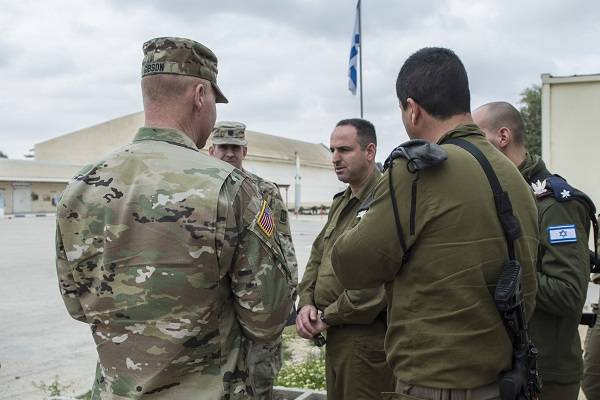“There’s always something new to learn, and whenever there’s an opportunity for a cooperation of this sort, we take it,” said IAF commander Liran Cohen.
By Noa Rokni, Connections Israel
Last week, US Air Defense Artillery Commandant Brig. Gen. Brian Gibson visited Israel, just one month after the United States announced its decision to purchase two Iron Dome batteries.
During his visit, he arrived at the Israel Air Force’s Air Defense Academy, where he met its commander, Col. Liran Cohen, and tried out a simulator of the Israeli weapon system.
“The Americans are currently looking to integrate ‘Iron Dome’ batteries”, said Cohen. “Therefore, they want to learn about the way we teach operation of the system and how we integrate it in our activity.”
The ADA (Air Defense Array) integrated the Iron Dome weapon system in 2011 and assisted in its development, which was mainly performed by Rafael Advanced Defense Systems. The involvement of ADA personnel in the system’s development helped them resolve the Americans’ queries.
“The Americans came with a will to learn about the system. They were impressed with the solutions it provides to air defense-related needs, as well as its advanced user interface,” Cohen added.
More in Common
Last year, Cohen visited the US Air Defense Artillery School. During his visit, the two sides decided to expand on their discourse in the field of instruction while maintaining the two forces’ cooperation in mutual training and exercises. “We saw that we have more similarities than we do differences, especially in instruction”, elaborated Cohen.
“As an air defense combatant – whether in Israel or anywhere else in the world – you fight an enemy which attacks not you but a civilian area. You need to act quickly, and make decisions within short spans of time,” he emphasized. “These are the things we need to train our combatants for.”
In spite of the similarities, there are still distinct differences in qualification between the two academies. When Israeli air defense combatants conclude their qualification process, they arrive at their battery for a short period of operational activity before returning to the academy for advanced training. In the United States, however, combatants never return to the academy except for officer training.
Searching the Skies for the Next Threat
“The United States deals with longer-range intercontinental threats, while the Israeli ADA’s operation is more local,” said Cohen. “At the end of the day, air defense combatants are air defense combatants. Whether in the United States or in Israel, your job is searching the skies for the next threat.”
The two arrays continue to operate in cooperation. “We want to arrange a crew exchange in the future, with service members of lower ranks learning from each other about modes of instruction and the various weapon systems,” concluded Cohen. “There’s always something new to learn, and whenever there’s an opportunity for a cooperation of this sort, we take it.”
